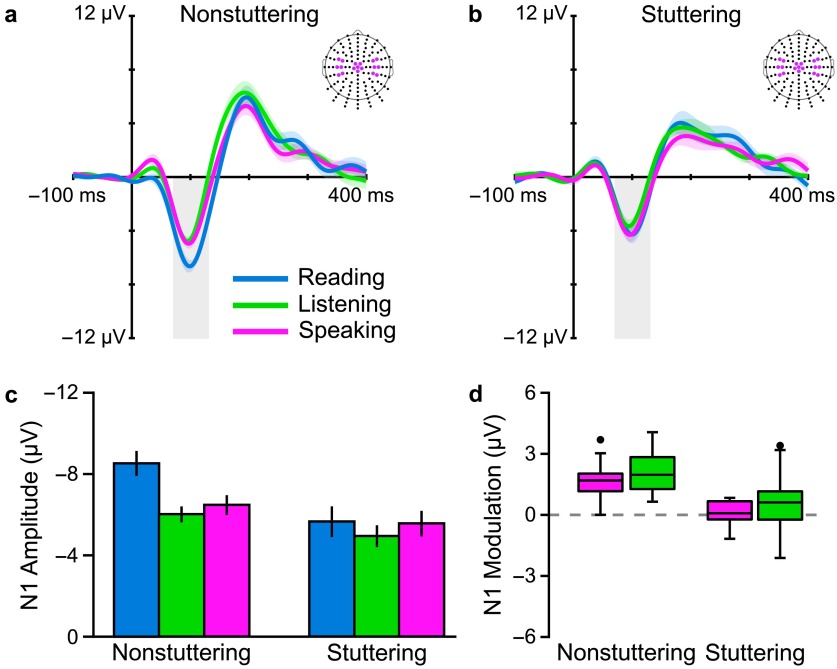Figure 3.
Grand-averaged auditory evoked potentials (averaged over the colored electrodes in the scalp maps) for (a) adults who do not stutter and (b) adults who stutter. We found that N1 amplitude of the participants who do not stutter in both the speaking and listening conditions was smaller than that in the silent reading condition; however, (c) N1 amplitude of the participants who stutter was similar in all three conditions (error bars indicate standard errors of the mean). (d) The boxplot illustrates participant distribution in terms of N1 modulation in the speaking and listening conditions for the two groups (i.e., modulation calculated such that positive values indicate an amplitude reduction relative to the silent reading condition). Adapted from Daliri and Max (2015a), Brain and Language, Vol. 150, A. Daliri and L. Max, “Electrophysiological Evidence for a General Auditory Prediction Deficit in Adults Who Stutter,” pp. 33–44, Copyright © 2015, with permission from Elsevier.

 This work is licensed under a
This work is licensed under a 